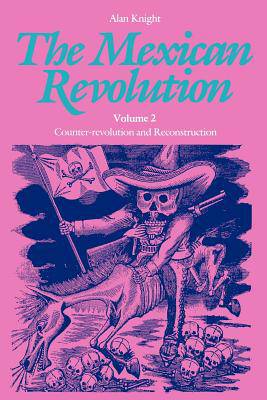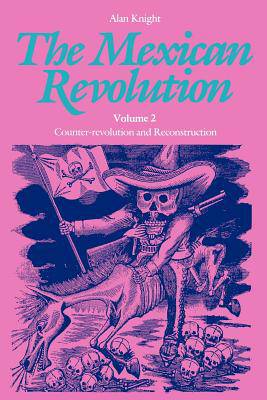
- Afhalen na 1 uur in een winkel met voorraad
- Gratis thuislevering in België vanaf € 30
- Ruim aanbod met 7 miljoen producten
- Afhalen na 1 uur in een winkel met voorraad
- Gratis thuislevering in België vanaf € 30
- Ruim aanbod met 7 miljoen producten
Zoeken
The Mexican Revolution, Volume 2
Counter-Revolution and Reconstruction
Alan Knight
Paperback | Engels
€ 68,95
+ 137 punten
Omschrijving
Volume 2 of The Mexican Revolution begins with the army counter-revolution of 1913, which ended Francisco Madero's liberal experiment and installed Victoriano Huerta's military rule. After the overthrow of the brutal Huerta, Venustiano Carranza came to the forefront, but his provisional government was opposed by Pancho Villa and Emiliano Zapata, who come powefully to life in Alan Knight's book. Knight offers a fresh interpretation of the great schism of 1914-15, which divided the revolution in its moment of victory, and which led to the final bout of civil war between the forces of Villa and Carranza. By the end of this brilliant study of a popular uprising that deteriorated into political self-seeking and vengeance, nearly all the leading players have been assassinated. In the closing pages, Alan Knight ponders the essential question: what had the revolution changed? His two-volume history, at once dramatic and scrupulously documented, goes against the grain of traditional assessments of the "last great revolution."
Specificaties
Betrokkenen
- Auteur(s):
- Uitgeverij:
Inhoud
- Aantal bladzijden:
- 708
- Taal:
- Engels
Eigenschappen
- Productcode (EAN):
- 9780803277717
- Verschijningsdatum:
- 1/03/1990
- Uitvoering:
- Paperback
- Formaat:
- Trade paperback (VS)
- Afmetingen:
- 152 mm x 229 mm
- Gewicht:
- 1020 g

Alleen bij Standaard Boekhandel
+ 137 punten op je klantenkaart van Standaard Boekhandel
Beoordelingen
We publiceren alleen reviews die voldoen aan de voorwaarden voor reviews. Bekijk onze voorwaarden voor reviews.











